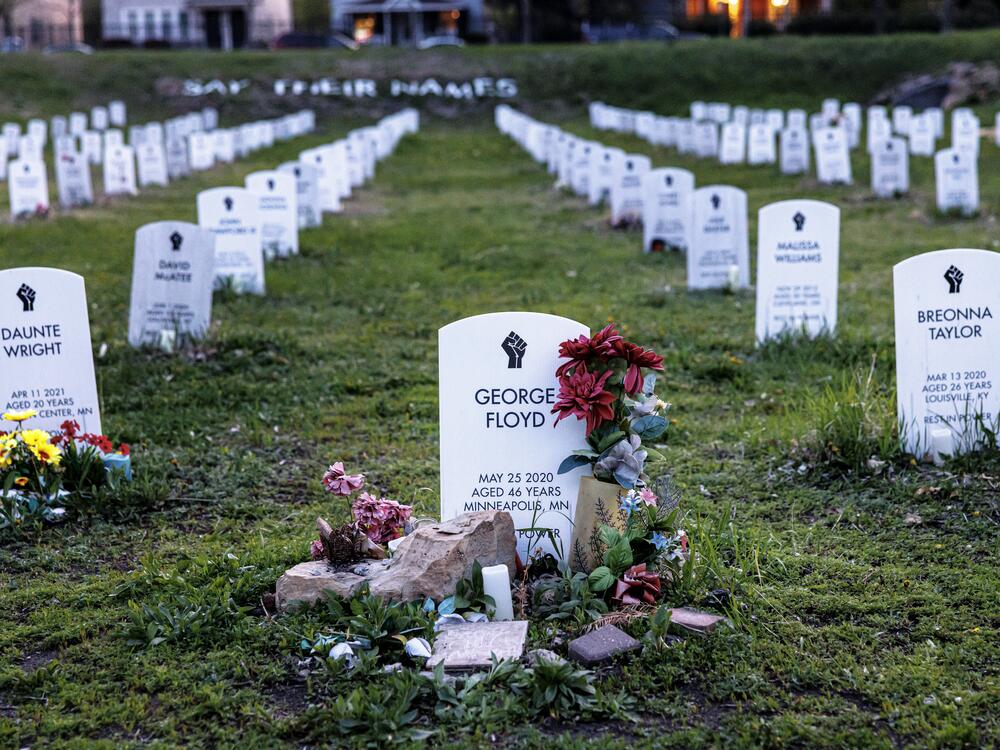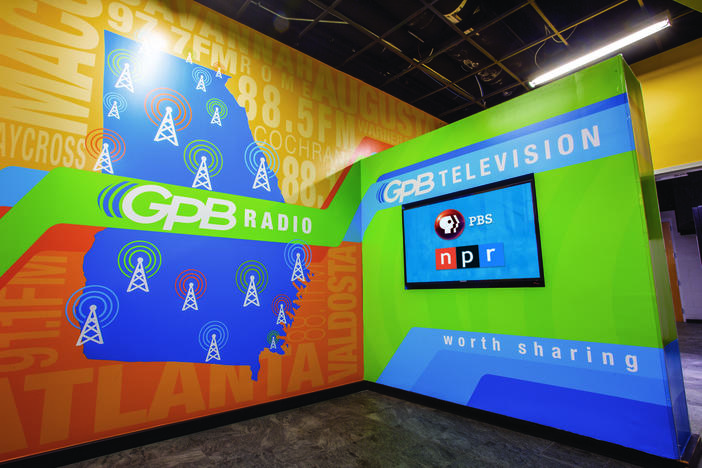Section Branding
Header Content
Who George Floyd was — and how systemic racism shaped his life
Primary Content
In some ways, George Floyd's story was an Everyman's story.
He grew up poor, he struggled in school and eventually fell into substance abuse. Most of the people he crossed paths with remember him as friendly to all, a man of faith who enjoyed a practical joke.
But like many other Black men, Floyd found himself interacting with the criminal justice system, and as a large man — well over 6 feet tall — he saw himself as a target . And in fact it was one final police interaction that led to his death.
He could have been just another statistic — one of the Black Americans disproportionately caught up in a dubious police encounter — but his death after officer Derek Chauvin put his full body weight on his neck was recorded on a phone and shared with the world, igniting some of the largest demonstrations ever recorded.
It's been five years since that moment, and NPR's Morning Edition is in Minneapolis looking back on Floyd's life and how the country responded to his death.
Two Washington Post journalists, Robert Samuels and Toluse Olorunnipa, set out to learn more about who George Floyd was, and after 400 interviews they tell his story in their Pulitzer Prize-winning book His Name is George Floyd. In the course of documenting Floyd's life they map his story against the backdrop of institutional racism that they say shaped his life's trajectory.
Speaking to NPR's Michel Martin, Samuels and Olorunnipa describe how they drew a line from Floyd's enslaved ancestors to his death under the knee of a white police officer.
"People weren't taking to the streets because they thought a saint was killed," Samuels said. "They took to the streets and they demanded change because a man was killed. And that man who lived his life not thinking he would die in that way, not trying to be a martyr, had to deal with the brunt of discrimination and bias that we still see today."
Who was George Floyd?
Floyd came into the world "bitterly poor," as Samuels and Olorunnipa describe it. He was born in North Carolina in 1973, but he spent most of his life in Houston, Texas where his family struggled to make ends meet.
Early in life, Floyd cycled through institutions shaped by racist policies. He lived in a segregated housing project, attended a segregated school, and found himself constantly entangled with the criminal justice system.
"We can draw a straight line from George Floyd's great, great, great grandfather, who was born enslaved in 1820 to George Floyd, dying in 2020, 200 years later, under the knee of a police officer and see how the very real impacts of slavery continue to reverberate even in modern day America," Olorunnipa said.
Despite the challenges, Floyd wanted a better life. He dreamed at different times of becoming a Supreme Court justice, a football player, basketball player or a truck driver.
Floyd was a star athlete on his high school football team, and he received a scholarship to play in college. But, he struggled with his studies and dropped out.
"He had come to Minneapolis to heal himself," Samuels said. "He was struggling with drug dependency and was looking to start a new life." But, the authors report, he often struggled with getting the help he needed; although he reported his addiction to authorities, he rarely had access to treatment.
Floyd moved to Minneapolis in 2017. He attended rehab, started learning how to drive trucks and began making a livable wage.
Many people in the community say he was memorable–even the mayor of Minneapolis, Jacob Frey said he recognized after Floyd's death that he had met him.
"He was a different kind of character," Olorunnipa said. "He was a large man. He'd go into a room and shake everyone's hand because he wanted to put people at ease, because he knew that his size made people intimidated by him."
George Floyd's history with the police
On May 25, 2020, Floyd went to a convenience store in South Minneapolis with a friend. He paid for cigarettes with a $20 bill that the clerk suspected was counterfeit.
The clerk called the police.
When the police arrived at the scene, they knocked on the vehicle that Floyd was driving.
"He was claustrophobic and he was also really fearful of going back to jail," Samuels said. "He had been haunted by the image of Philando Castile and would tell people, 'I just feel the police are waiting to kill another big guy like me.'"
"So, when he sees the police at the door, he begins to freak out," Samuels added.
Before that fateful day, Samuels and Olorunnipa learned that Floyd had experienced more than 20 police encounters. He was arrested for things like theft, small-drug possession and trespassing — he was once arrested for walking through his own neighborhood.
"In some cases, he was doing the wrong thing," Olorunnipa said. "But reviews have shown that some of those police officers themselves were corrupt and some of them have since been charged with police corruption."
What is George Floyd's legacy?
Samuels and Olorunnipa say George Floyd's life is an American story.
"His experience as an American, even before he met his ultimate demise under the knee of a police officer, was a case study in how racial injustice operates in the modern era," Olorunnipa said. "Not to say that he didn't make his own choices, not to say that he didn't struggle with his own demons, but we found that every time he made a mistake, the consequences were that much harsher because of the color of his skin," he said.
They argue that the clearest example of systemic racism shaping Floyd's life was his experience with drug dependency and inescapable struggle with the police.
"Each time he was met with criminalization and punishment and rather than getting treatment, he was thrown in jail and told that he was faking his illnesses," Olorunnipa said.
His story resonated with people across the globe. It inspired large demonstrations around the world and moves to address racial inequities. Some states and municipalities instituted changes to police practices such as banning chokeholds and no-knock warrants. Some businesses and cultural institutions, Olorunnipa said, attempted to change racist practices and policies.
But resistance to those changes is taking hold.
"Five years later, we are seeing this backlash, this erosion of some of that progress, the push against diversity, equity and inclusion," Olorunnipa said. "So, George Floyd's legacy is very much wrapped up in that battle between progress and retrogression. And we are sort of in the middle of that and seeing it play out in real time."
Obed Manuel edited the digital piece. The audio story was produced by Barry Gordemer and edited by Jan Johnson.

